This is what I’ve learned about cooking with and cleaning up my vintage pots and pans.
 I was accustomed to cooking with stainless steel, aluminum, and cast iron cookware before I started using tin-lined copper, and these are the adjustments I’ve made.
I was accustomed to cooking with stainless steel, aluminum, and cast iron cookware before I started using tin-lined copper, and these are the adjustments I’ve made.
I preheat pans on Medium heat and not for very long. I was accustomed to parking my cast iron or steel pan for ten minutes on a burner turned up to High, but my copper pans heat up much more quickly and efficiently. Now I set the heat to Medium and the pan is ready within a few minutes.
I don’t leave an empty copper pan on an active burner. I preheat my pans with a splash of oil or butter in them to help moderate the heat. A few seconds is fine, of course — there’s plenty of time to fetch the oil from the cabinet while the pan is heating up.
I don’t use the High heat setting any more. Because my copper pans are so efficient with absorbing, spreading, and holding heat, I don’t need to flood them with flame. My Medium heat setting gets me a nice hot pan that’s well able to brown food.
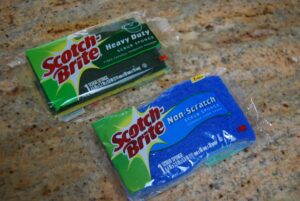
I don’t use any metal cooking utensils. When I started cooking with copper I gathered up every metal (or metal-edged) implement I had and marched them into storage. Instead I use wooden, bamboo, plastic, or silicone tools, or metal tools where the edges have been coated.
I only use non-scratch scrub sponges. As with my metal utensils, I rounded up all my scratchy sponges and herded them into the housework-only bucket.
I soak pans but I don’t immerse them in water. I’ve found soaking to be the magic trick to get even the worst caramelized residue off of tin without needing to scrub it. But I never dip the pan into a sudsy sinkful of water — I don’t want to invite water into the crevice between the pan and its handle. I fill the pan with soapy water and let it sit in the sink or on the counter out of the way.
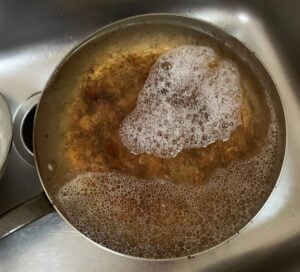 I clean carefully around handles. This is a problem area for pans because cooking oils and grease can settle in there and get grody.
I clean carefully around handles. This is a problem area for pans because cooking oils and grease can settle in there and get grody.
I dry carefully around handles. This is especially important with iron-handled pots where rust can accumulate if the iron stays moist.
After the pan is clean and dry, I put it back on the cooktop and give it about 10 seconds of heat. This warms the pan enough to help any remaining water in the handle crevices to evaporate.
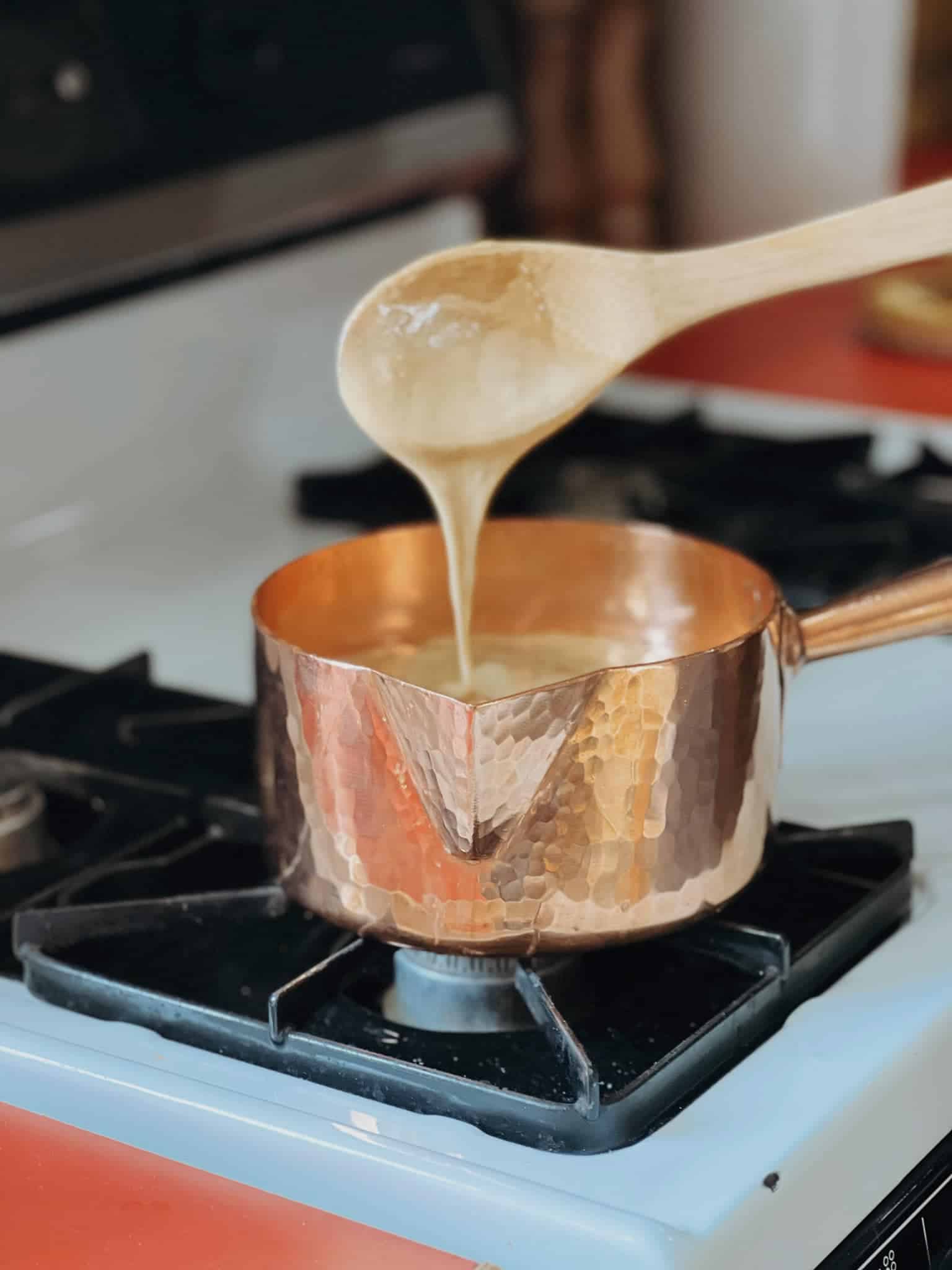

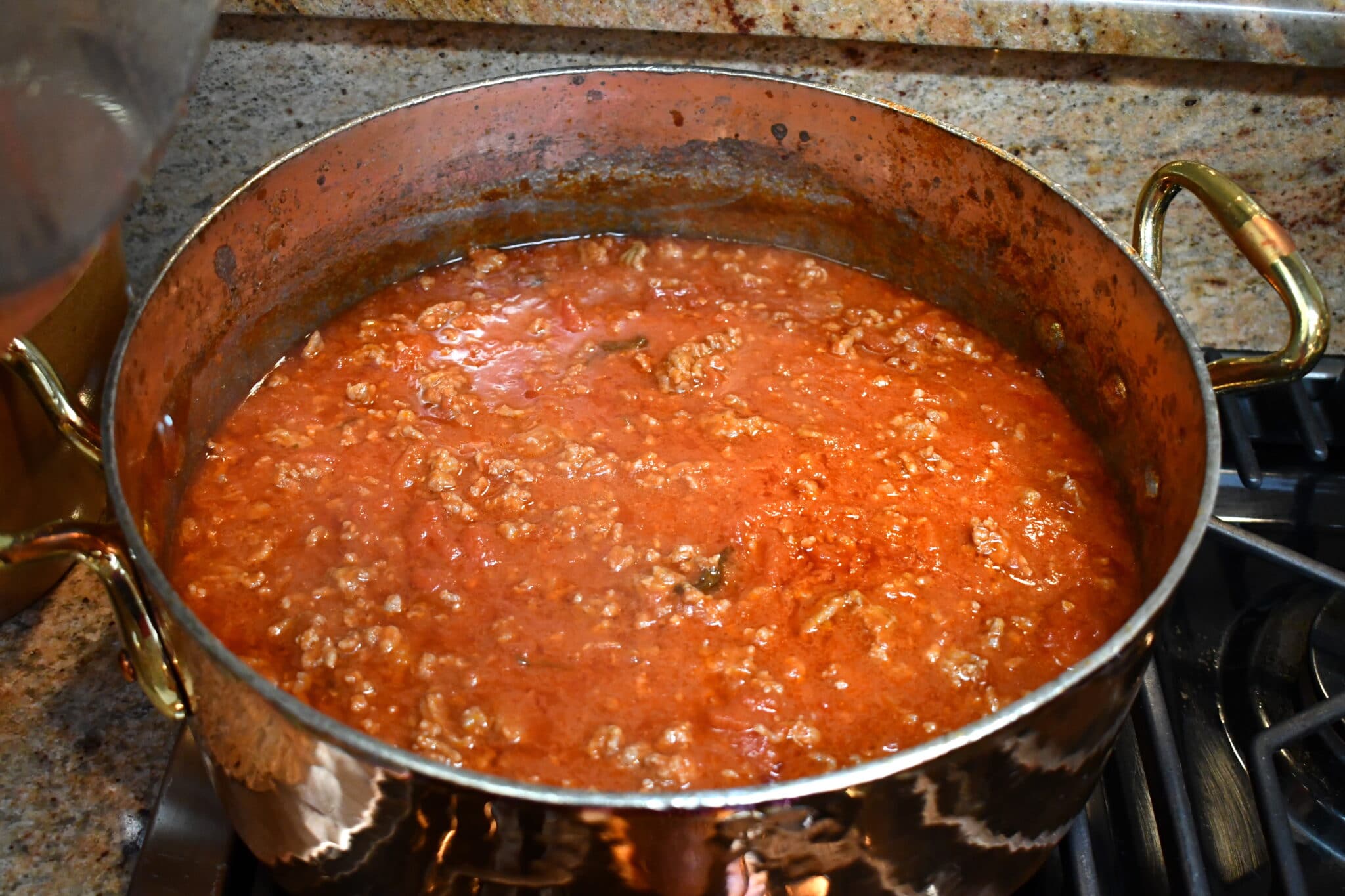
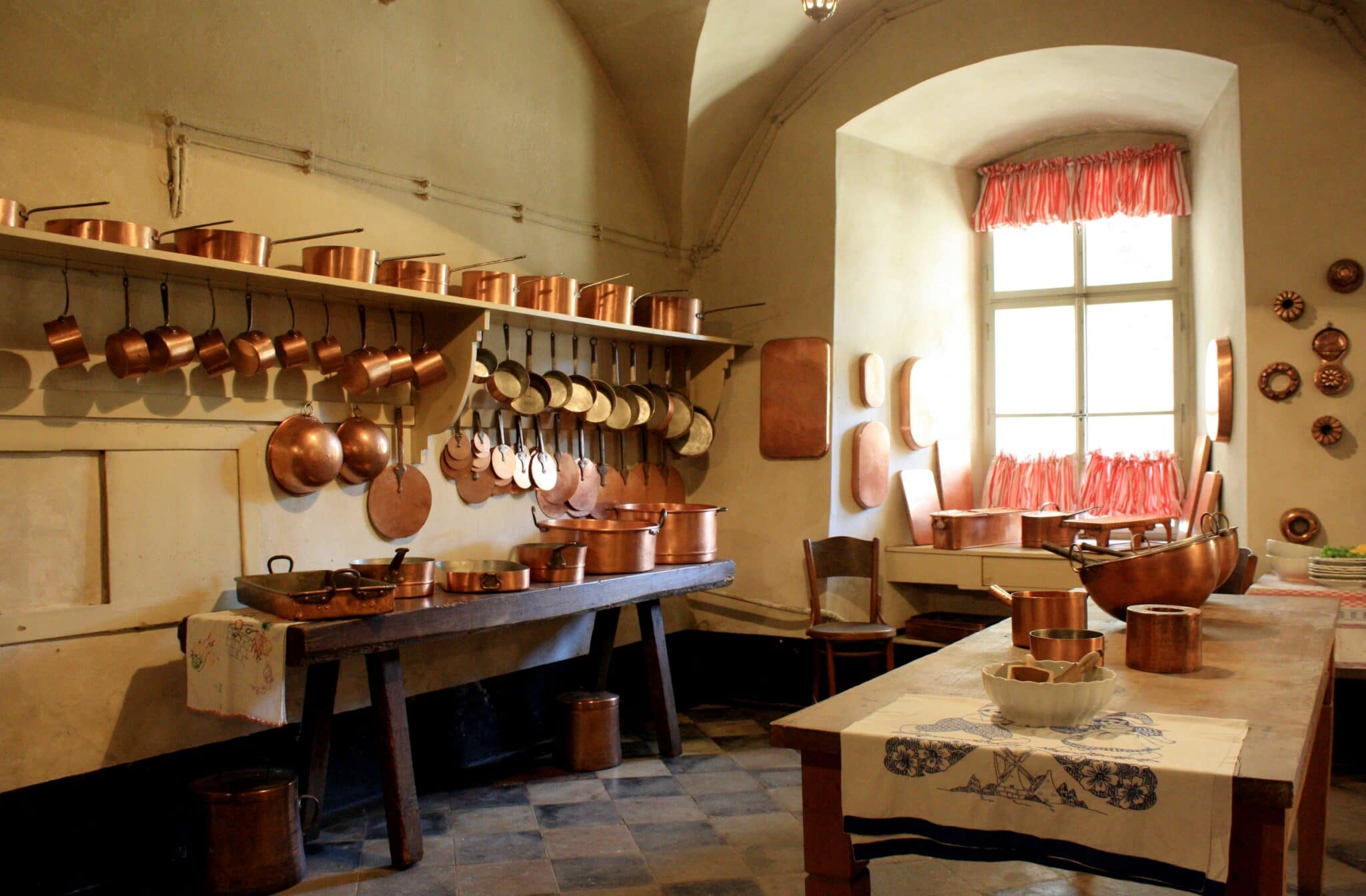

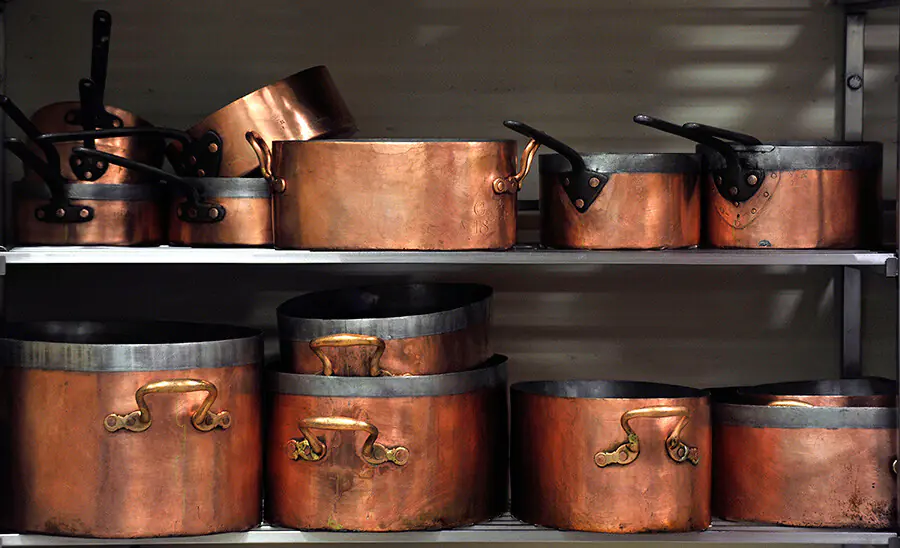
Thanks so much VFC for a simple description of the use and care of old copper pots and pans. Do you clean the copper after each use?
Susan, I’m so glad you found it helpful! No, I don’t clean tarnish from my pans each time I use them. I love the look of bright and shiny copper (obviously!) but I have made peace with the reality that every working pan will tarnish. I use protective copper polish on display pieces to increase their resistance to tarnish and so far it works quite well.
Thank you for this excellent practical advice about using vintage copper pots and pans, which I imagine holds true for silver-lined copper pots as well. I am curious: what is the definition of “vintage” as you use it? I have some modern thick copper tin-lined pots (made in the 70s and 80s and later.) They aren’t vintage yet they look and cook the same and appear very traditional in style and construction. At least as far as cooking goes I’m guessing they count as vintage? Regarding seasoning of the pans: does the tin lining ever become seasoned after careful use, or does the use of moderate heat keep them too “cool” to accomplish this? In fact, would tin-linings even need or benefit from seasoning? And finally a question about modern bi-metal pans like a French Bourgeat pan I have: Would the SS lining ever become polymerized and seasoned in the way that it does in my SS All-Clad pans? Or does the efficient spreading of heat in thick copper pans prevent this?
CapeCodCook, those are excellent questions — so excellent that I went off and started working on posts to answer them and completely forgot to reply! To your first question: I’m working on a lengthy post about eras of copper manufacture and what I intend to call them and hope to have it up soon. To your second question: I do see my fry pans seasoning through use, and I am not planning to remove it as I think it can only improve the near-no-stick performance of the pan. To your third question: I’m not sure. I would think a bimetal pan would season identically to a tinned pan at the same temperature, but I’m going to have to look into that. Thanks so much for the great questions — as you can see, they really got me thinking!
Como utilizar con inducción?!
Hola Charles! Desafortunadamente, en este momento, las estufas de inducción no funcionan con ollas de cobre puro. Algunos fabricantes fabrican utensilios de cocina de cobre con una capa adicional de metal magnético en la base que funcionará con inducción, o puede comprar una “placa convertidora” hecha de hierro o acero que coloca sobre la parte superior del quemador de inducción y luego coloca el cobre encima de eso.
Funny, I buy these to cook with. I find it funny to collect them solely to collect them. They are for cooking, not shining, if not so old. My oldest saute is an 1860 or so store pan. I cook with it. Copper is superior for browning and tin is superior for flavor creation.
Typically, I use two pans, a saute to brown meat and a saucier to make sauce. When ready, the saute pan is de-glazed with wine and the concentrated sauce made in the saucier is added to the saute pan. The meat is then added back to the saute pan to finish cooking on very low heat. Strain the sauce before adding to the saute.
A good saucier will be of the Windsor design for fast evaporation and concentration flavors. And a saute needs a lid. If you de-glaze properly, tin is near wipe clean with a rag easy to clean.
Hey Robert! I think it’s marvelous that you consider your antique copper to be everyday cookware. I expect Jules Gaillard and Eugene Dehillerin would also laugh to see their work treated as precious collector’s items. I like your cooking advice — would you consider a guest post to share your experience?